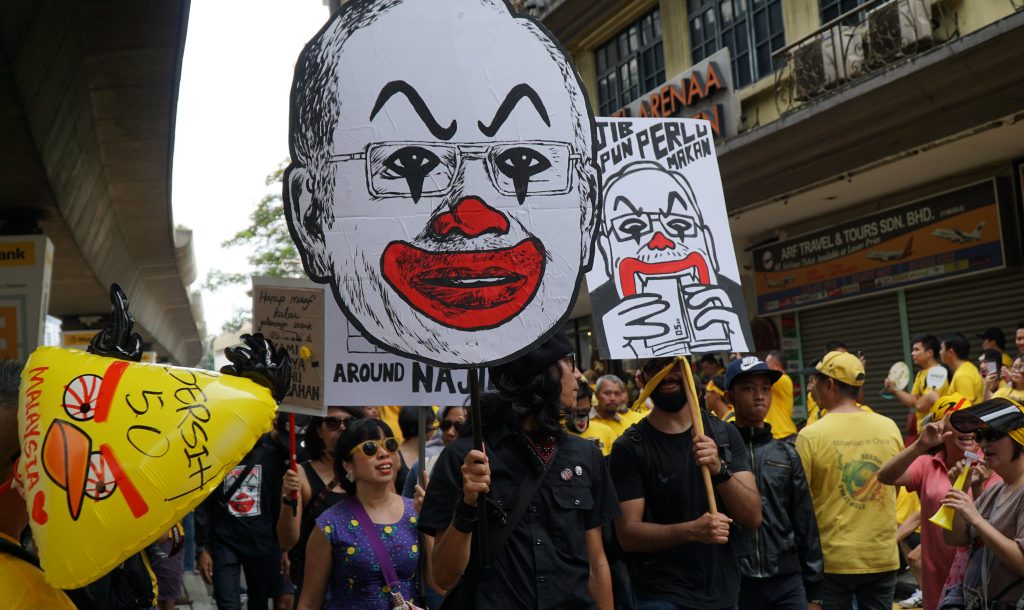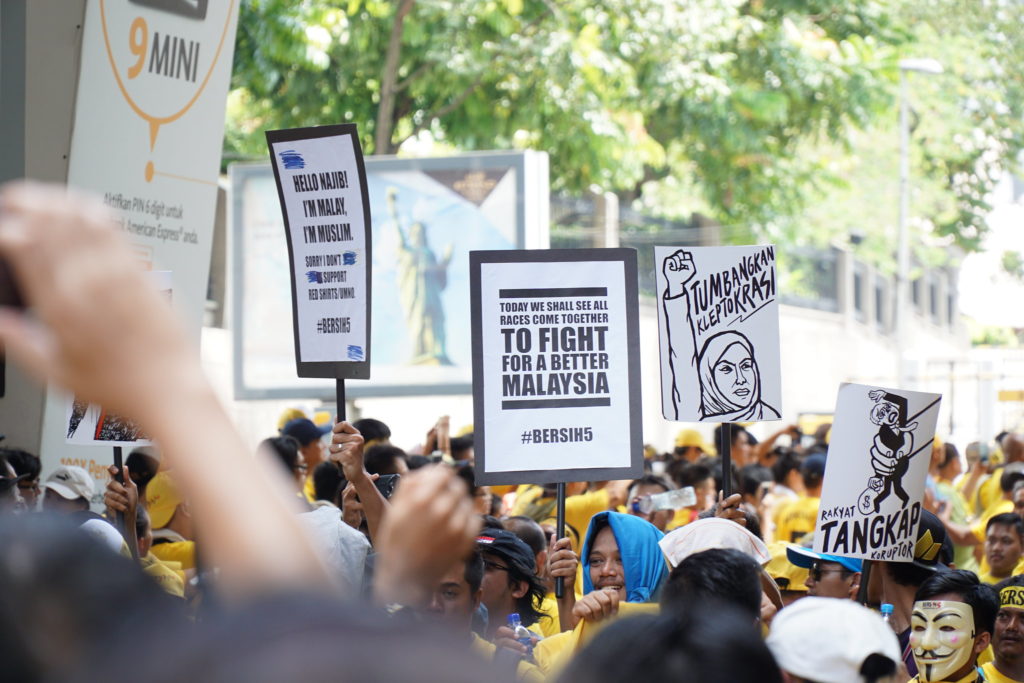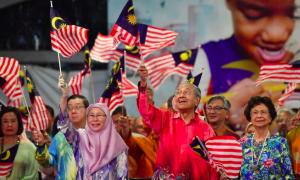From the absence of state legitimacy and increasingly weak institutions to mass corruption scandals, Malaysia a year ago was seemingly on the verge of a political breakdown. In a shocking election result that made history on 9 May 2018, the Pakatan Harapan (PH) coalition brought an end to the ruling Barisan Nasional (BN) coalition that has dominated Malaysian politics for six decades since the country’s independence from British rule in 1957. Since then, the term “New Malaysia”, or in Malay “Malaysia Baru”, has emerged. For many, the win for the PH government led by Mahathir Mohamad signalled a change towards democratic reforms and away from racialised politics. But after a year, criticisms mounted and the politicisation of race has continued under the new government.
Just last month on 31 August, Malaysia celebrated its 62nd Independence Day under the official slogan, “Sayangi Malaysiaku: Malaysia Bersih” (Love Our Malaysia: A Clean Malaysia). This theme brought together ideas of integrity and unity built on love for one’s country. These same ideas have been championed by the Bersih movement, a prominent electoral reform movement in Malaysia that has staged five mass protests since 2007 – which have drawn tens of thousands of people to the streets each time. A public opinion poll revealed that support for the Bersih 4 demonstrations was divided along racial and socio-economic lines. 81% of Chinese and 51% of Indians surveyed were supportive of Bersih 4, but 70% of Malays surveyed were opposed to it. Further, as household income increased, support for Bersih 4 increased linearly, and 57% of those with no internet access were opposed to Bersih 4. Thus, it seemed that Malays, especially those from lower-income rural backgrounds, were less supportive of the Bersih movement. This group also tends to show loyalty towards the BN government, so it makes sense that they were hesitant to support a movement that is critical of the government.
A Changing Malaysia?
A new series of perspectives on the “Malaysia Baharu” from Malaysian scholars, activists, and policymakers.
Divisive racial politics have defined Malaysia since the divide-and-conquer practice of British colonialism. As a result, there have been few opportunities for true racial unity to inform Malaysian politics. Hence, there are high expectations that the PH government will bridge the racial divides in Malaysian society. It is therefore important to remember how the Bersih movement has long encouraged different races in Malaysia to unite to push for democratic changes together, even in the face of severe repression from the previous ruling government. How did the movement manage to do this, and what can the new government learn from Bersih’s efforts?
The role of leaders in social change
In our research, we have focused on the role of leaders within the Bersih movement to understand how they mobilised a multi-racial society to get behind the cause of clean and fair elections. In 2016 and 2017, we conducted in-depth interviews with the steering committee and secretariat members of Bersih, before and after the Bersih 5 demonstrations took place – the fifth and last major street protest that the movement organised before the May 2018 election.
In particular, one key challenge for the movement was to include Malay and rural communities within its support base and thereby dispel the myth and criticism that the campaign was not advocating for these groups. In our interviews, the movement leaders shared with us how they attempted to build solidarity across racial divides through strategic thinking and planning. From their responses, we identified three key themes that reflect the social identity theory of leadership – which argues that effective leaders are effective “entrepreneurs of identity”.
First is expanding ideas of “who we are”: The Bersih leaders extended the movement’s boundaries by networking with Malay and rural groups and NGOs. One way they did so was through the Bersih 5 convoy, during which Bersih activists travelled to rural and Malay-majority areas of the country to initiate conversations about democratic reforms, thereby creating coalitions on the ground.
Second is by sharing “what we stand for”: The Bersih leaders promoted public understanding of the need for electoral reform by communicating using common and inclusive language. This meant that Bersih was multi-lingual during their outreach efforts and built rhetoric around a common goal of ending government corruption – which could appeal to people from different walks of life.
Third is defining “who can lead us”: The Bersih movement ensured that individual leaders within the movement were relatable to, and reflective of, the different groups in society that the movement sought to unite. For example, having prominent Malay civil society leaders joining and endorsing Bersih made it difficult for critics to claim that the movement was anti-Malay.
Importance of leadership in promoting solidarity across group divides
Our findings suggest that Bersih movement leaders strategised to make the movement identity inclusive of the different groups in Malaysia. While our research focused on the perspective of Bersih movement leaders, observers of the Bersih 5 protests themselves have remarked on the increased turnout of Malay and rural groups.
The Bersih movement has provided a platform for Malaysians from different backgrounds to come together, and has shaped public discourse away from divisive politics and towards clean and fair elections. These outcomes are possible in part through the diligent, galvanising efforts of Bersih movement leaders. In a multi-cultural country, such leadership efforts are important because they allow us to imagine a world where solidarity for the common good is the norm and not the exception.
With Malaysia Day on 16 September, it is timely for the PH government to change the political narrative away from ethno-religious divides and towards an inclusive society. We see signs of this in Mahathir’s vision of Shared Prosperity 2030, a new economic model that aims to promote better living standards for all groups regardless of race and social class. It is timely for national leaders to embrace the three themes of the social identity perspective on leadership by creating a Malaysian identity that wields diversity as a source of strength rather than division, much like how the Bersih movement has done.
 Facebook
Facebook  Twitter
Twitter  Soundcloud
Soundcloud  Youtube
Youtube  Rss
Rss 




